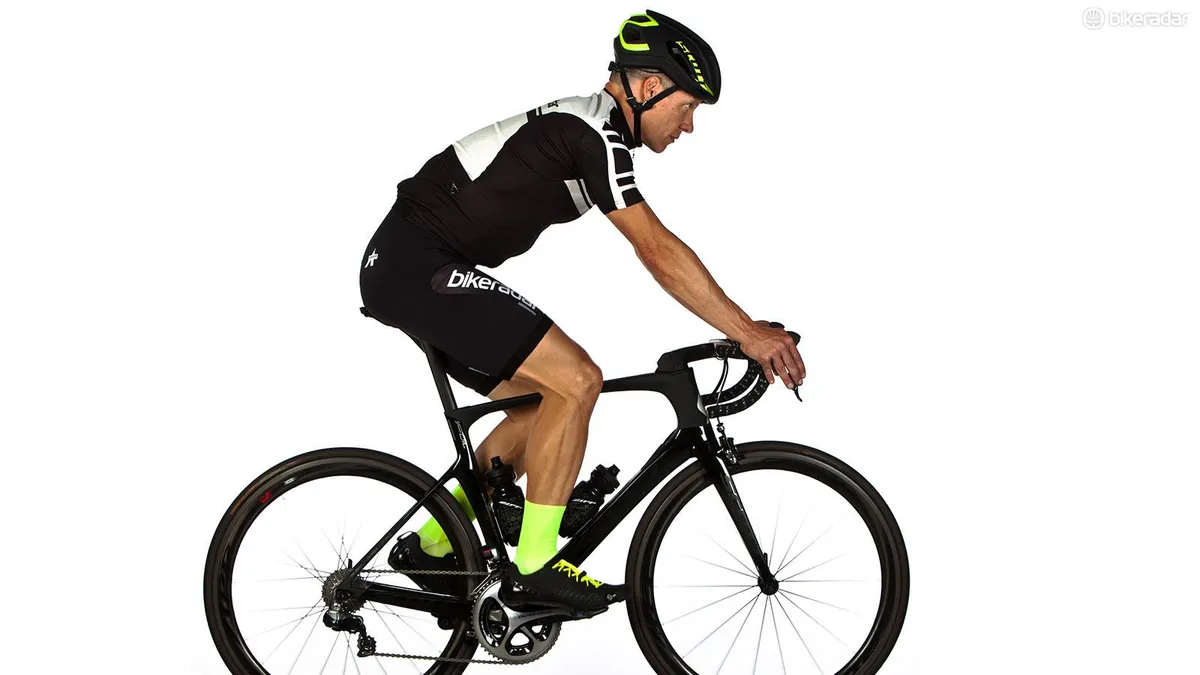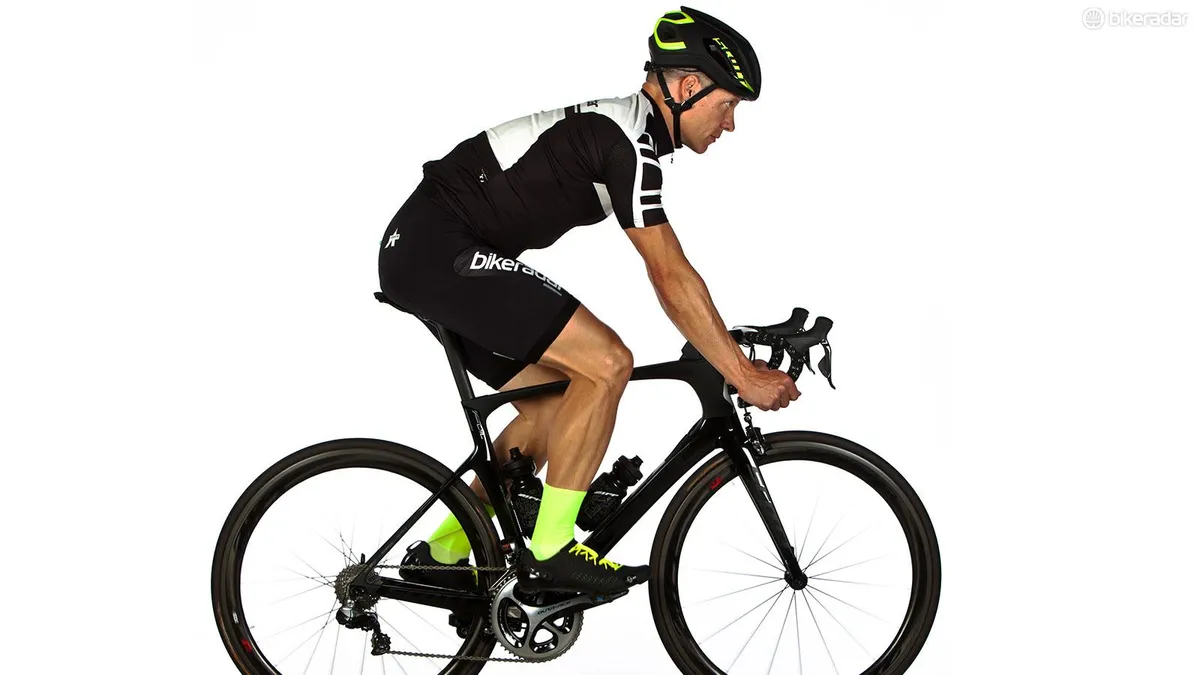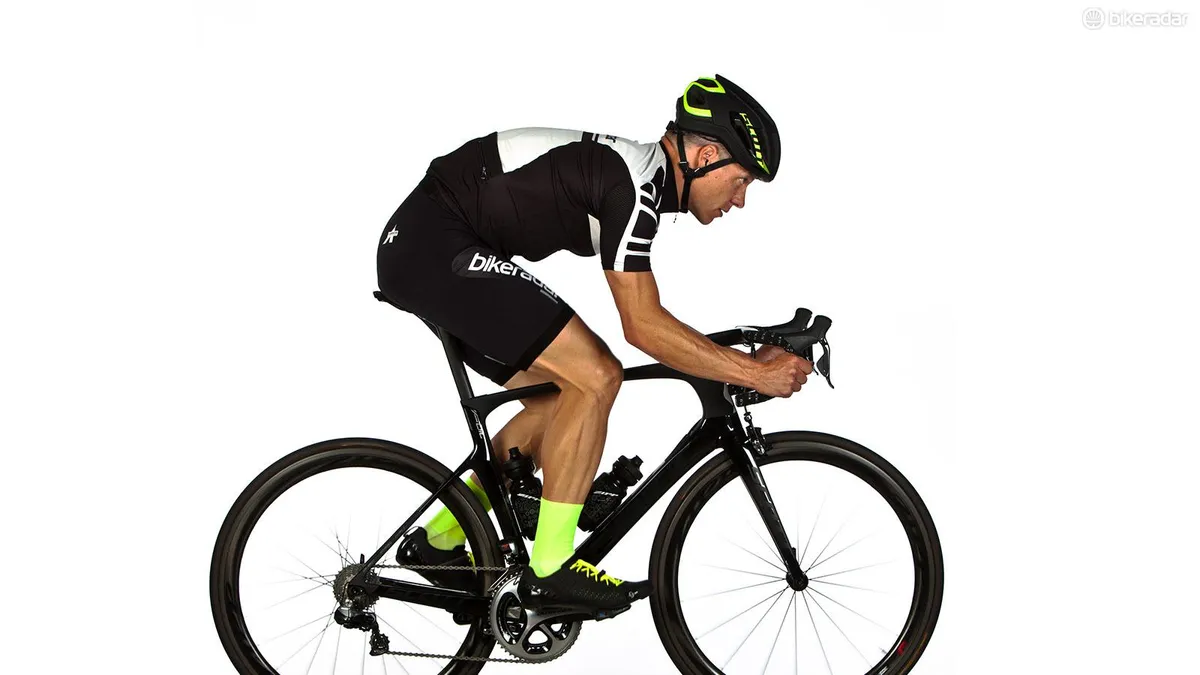This is a sponsored article, brought to you in association with Scott.
There are two basic ways to go faster on the bike: pedal harder or decrease resistance. Here we’ll show you how to do the latter and explain how much of a difference that can make.
- How to ruin an aero helmet (don't do this!)
- Aero positioning isn't everything
- The aero bike that won Paris-Roubaix
How to ride faster without pedaling harder
Air drag makes up the bulk of resistance you have to overcome and your body makes up 70 to 80 percent of your total drag. So, just changing the shape your body presents to the wind can make a huge difference on your speed.
Riding around the track in the same gear, it was easy to feel the difference in each position
As with everything in cycling, though, it’s a balance — the fastest position is not the most comfortable or sustainable. To quantify the differences, and to qualify what they mean in the real world, we measured four basic position options on the Los Angeles Velodrome with data provided by Jim Manton of ERO Sports. Jim is a professional bike fitter with the unique situation of having tools to measure drag in real time.
The basic idea in reducing aero drag is that a smaller frontal profile is faster. You can feel this yourself while coasting downhill. Sit up high and you catch more wind, slowing your progress. Tuck down tight, effectively reducing your shape at the front, and you go faster as you’re creating less wind resistance.
Four positions, four drag measurements
Using ERO Sports’ Alphamantis Track software, we did two run-throughs of each position, measuring CdA (Cd is coefficient of drag, and A is the frontal area you present to the wind). A lower number means a faster rider, for the same effort.
You might be familiar with the concept of watts per kilogram (w/kg), which is a handy way to compare riders’ performance, especially when climbing is involved. But watts per CdA plays a huge role in how fast you’re able to propel your bicycle (and it’s easier to shrink CdA than lose kg!).
We repeated the track testing protocol with a second rider and we compared the data to past data of comparable positions, including a study published in the Journal of Sports Engineering and Technology. While the exact measurements varied from rider to rider, the overall order of speed for the positions remained identical. The data shown below is an average of the two sets of measurements Jim took with me.
The watts-saved figure is for me on a Scott Foil at 40kph. Keep in mind that aero drag is not linear; it ramps up exponentially the faster you go. Riding around the track in the same gear, it was easy to feel the difference in each position; lowering my torso felt like I had shifted into a much easier gear.
Position 1: Straight arms, hands on hoods

This is likely the position you’ll ride in most of the time. It’s comfortable and you have your hands on your brake/shift levers. It’s also the slowest, as you are relatively upright.
This position was used as the baseline for watts-saved comparisons with the other three.
- CdA 0.4678
Position 2: Straight arms, hands in the drops

This is a relatively comfortable position for most people. It lowers your torso and therefore your CdA, but the straight arms still present two big cylinders to the wind, and a cylinder isn’t a fast shape.
- CdA 0.4065
- Watts saved at 40kph — 67
Position 3: Bent arms, hands in drops

This position gets your torso low and flattens the forearms, reducing drag. This is fast, but — for me and many riders — isn’t very comfortable for very long. It strains my neck and arms.
- CdA 0.3403
- Watts saved at 40kph — 112
Position 4: Bent arms, hands on hoods

This position keeps your back low and reduces drag on your arms by keeping the forearms relatively flat, and thus out of your frontal profile. But it’s also pretty comfortable for many people and you can rest some of your weight on your forearms where they contact the bar.
- CdA 0.3627
- Watts saved at 40kph — 94
Other tricks and tips for going fast without going harder
Besides body position, there are some other simple tricks you can employ to go faster without going a single watt harder.
One, tighten up. We don’t wear these clothes to look good, people! Cycling clothing is tight for the same reason your swimsuit is tight — bagginess causes drag. And you wouldn’t go swimming in jeans and a baggy hoodie, would you?
Even something simple like your helmet straps can make a big difference. I was recently in the DST wind tunnel and found a 4.5-watt difference (at 45kph) just by loosening the straps way out and letting them flap over the sunglass arms.
Speaking of helmets, aero helmets do make a difference. It may just be 5-15 watts, but since most of us can’t maintain more than 300w for an extended period, these single-digit differences add up.
Another easy thing — carry your stuff in the center jersey pocket instead of the side, where it causes more drag.
Bottom line: bend your elbows for free speed
Use good sense about when and where you employ aero positioning. When climbing, it’s all about being comfortable and producing good power. Don’t worry about the aero drag. On descents, tuck and coast — this is free speed, people! Here you can really get small and experiment with different positions. On longer descents, watch how your speed changes as you change position.
When riding on the flats, think about getting low but do so comfortably. Here, having a good bike fit and a saddle that agrees with you are vital.
Finally, think about cycling like swimming — the smoother you are, the easier it is. You don’t have to be racing to appreciate going faster for less effort. Free speed is its own reward.
